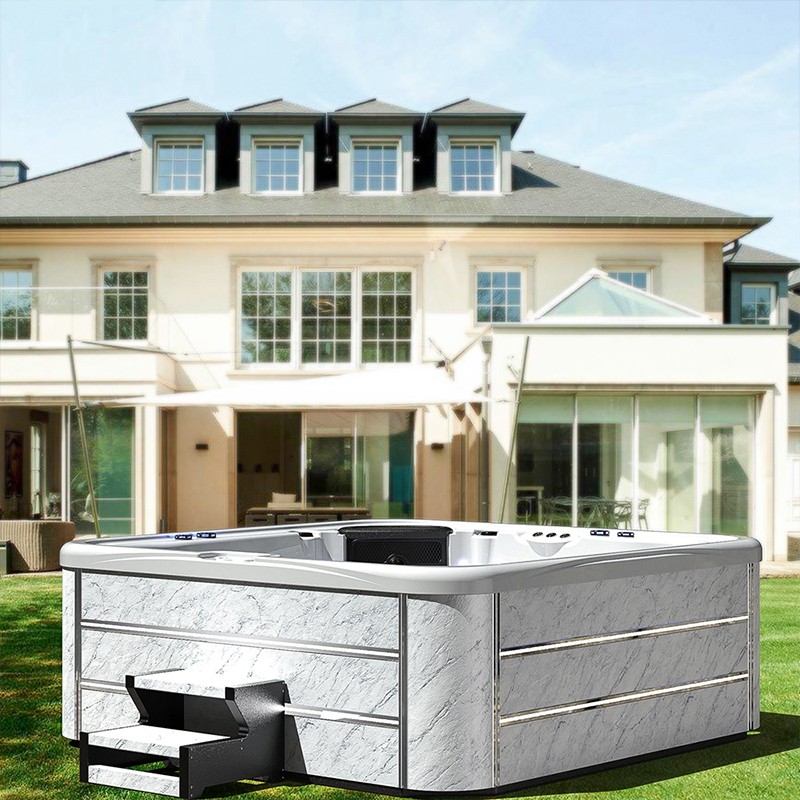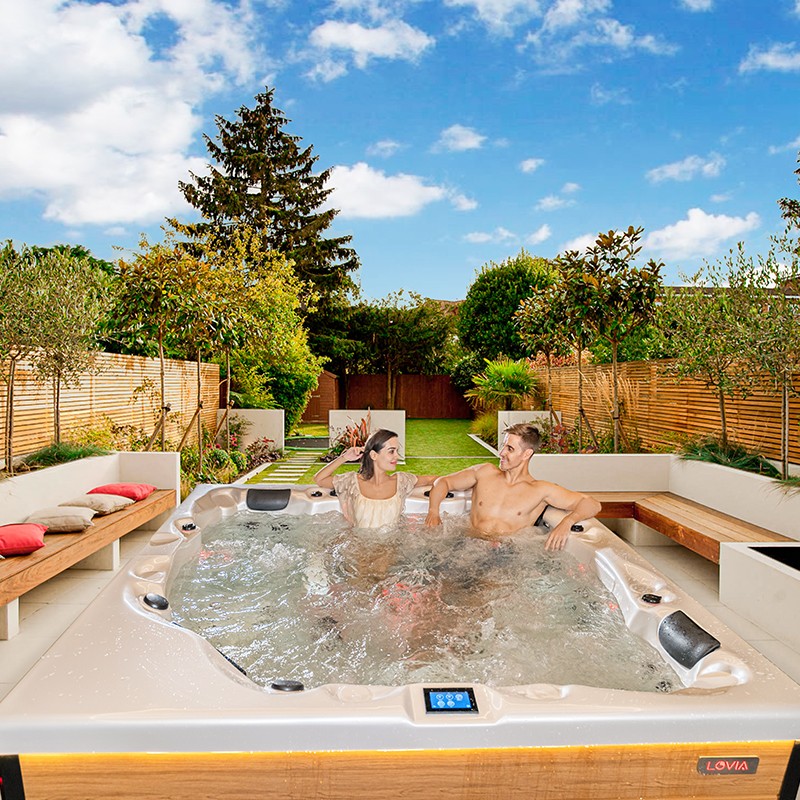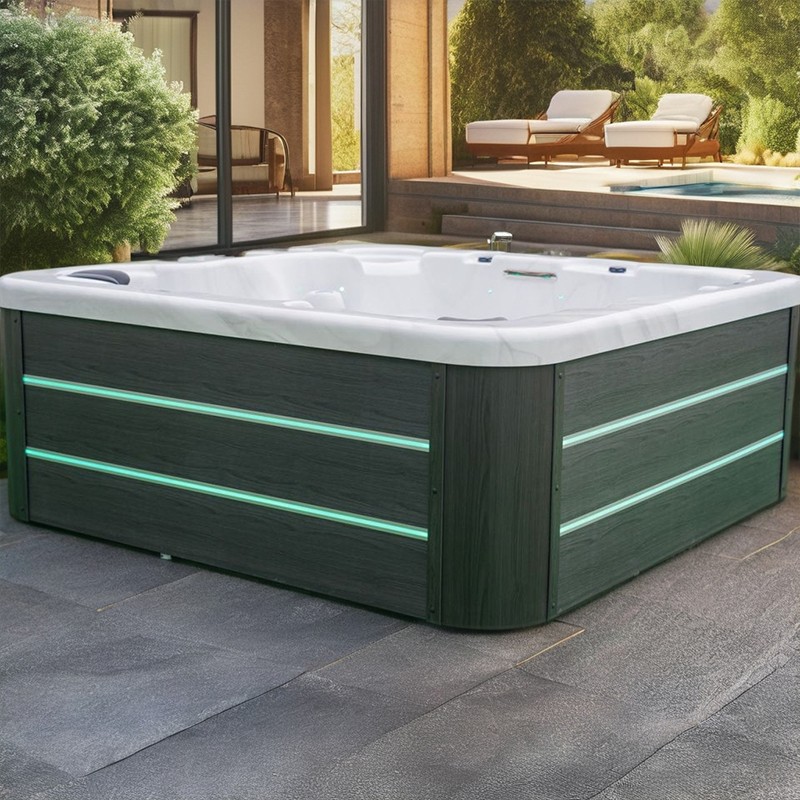
How many volts does a plug n play hot tub use?
2025-04-21 15:35As people's demand for home leisure facilities increases, hot tubs have gradually become a popular choice for people to relax and decompress. There are many types of hot tubs, and the design and functions vary according to different user needs. Among them, plug n play spa hot tubs are popular because of their easy installation and simple operation. This type of hot tub does not require professional electricians to install, and can be used by plugging into ordinary household power.
However, many people have questions about the voltage requirements and heating time of plug n play hot tubs. This article will explain in detail the voltage standards used by plug n play spa hot tubs and the factors that affect their heating time to help users better understand this device.

What is the voltage standard for plug n play hot tubs?
One of the most notable features of plug n play hot tubs is their low installation threshold. Unlike traditional hot tubs, which usually require 220V or higher voltage and must be arranged by professional electricians for complex circuits, plug n play hot tubs are designed to be directly plugged into household power outlets, which makes them more adaptable, especially for those who do not have high voltage access or are unwilling to make complex electrical modifications.
110V/120V Standard Voltage
In North America and other regions, plug n play hot tubs generally use a standard 110V or 120V voltage. This voltage standard is the same as other common household appliances in the home, making installation very simple. Simply plug the device into a regular three-pin outlet and the hot tub will start running without any additional electrical equipment or modifications.
220V/240V Voltage Option
While most plug n play hot tubs use 110V voltage, some high-end models or larger devices may also support 220V or 240V voltage. In this case, although the plug n play spa hot tub can still be operated through a 110V outlet, if the user has a 220V power supply, using a higher voltage can improve the heating efficiency and performance of the device. It should be noted that 220V outlets usually need to be installed by a professional electrician, so for users who want a simple installation, the 110V option is still the most convenient choice.

What is the heating time of plug n play hot tubs?
Heating time is a question that hot tub users are very concerned about. Since plug n play spa hot tubs use a lower voltage standard (usually 110V), they heat up slower than traditional high voltage hot tubs. There are many factors that affect the heating time, and we will analyze them one by one below.
Heater Power
The power of the heater is the most direct factor that determines the heating speed. Most 110V plug n play hot tubs are usually equipped with a heater of about 1.5 kilowatts, while the heater power of hot tubs using 220V voltage is usually 4 to 5 kilowatts or even higher. This means that the heating efficiency of 110V plug n play hot tubs is significantly lower than that of 220V models, so it will take longer to heat up.
For example, if a heater has a power of 1.5 kilowatts, it means that it can provide 1500 watts of heat per hour. For a 300-gallon (1,135-liter) plug n play spa hot tub, the energy required to heat the water from a cold state (assuming the water is 60 degrees Fahrenheit, about 15 degrees Celsius) to 104 degrees Fahrenheit (about 40 degrees Celsius) may exceed 12 hours or even longer.
Initial Water Temperature
The initial water temperature will greatly affect the time it takes to heat up the plug n play spa hot tub. If the water temperature is close to ambient temperature, such as the outdoor water temperature close to zero degrees Celsius in the winter, the heating time will be significantly longer. In the summer, if the water temperature is higher, the heating time will be shorter.
In cold weather, especially when using the plug n play spa hot tub outdoors, the heater will be more loaded, so users should be prepared for longer heating times. For those who live in cold climates, consider additional insulation, such as using a hot tub cover, which can effectively reduce heat loss and speed up the heating process.
Size and capacity of the hot tub
The heating time of the plug n play hot tub also depends on the size and capacity of the tub. Small 2- to 4-person hot tubs have a smaller water capacity, usually around 150 to 250 gallons, while large hot tubs may have a water capacity of 300 gallons or more. The larger the water volume, the longer it will take to heat up. A simple rule of thumb is that it takes a certain amount of energy to heat each gallon of water, and doubling the capacity of a plug n play spa hot tub will significantly increase the heating time.
External environmental factors
External factors such as ambient temperature, wind speed, and humidity can also affect the heating time. In cold environments, plug n play spa hot tubs lose heat faster, which makes the heater take longer to heat the water to the target temperature. Therefore, when using plug n play spa hot tubs outdoors, using a good thermal cover and proper insulation can effectively reduce heat loss and improve heating efficiency.

How to shorten the heating time of plug n play hot tubs?
It is a common problem for plug n play hot tubs to heat up a little longer than traditional models, but users can take some measures to shorten the heating time and enjoy the comfortable experience of the hot tub sooner.
Use an Insulated Cover
When your plug n play spa hot tub is not in use, keeping the cover closed is one of the simplest and most effective ways to prevent heat loss. An insulated cover will keep most of the heat inside the tub, reducing the heater's workload and speeding up the heating process. It is recommended to keep the cover closed during the heating process, even when the plug n play spa hot tub is not in use, to reduce heating time.
Preheating
If you know you will be using your plug n play spa hot tub, you can turn on the heater a few hours in advance to allow the tub to preheat. This is especially useful for users who plan to use the hot tub in cold weather.
Raise the Ambient Temperature
If possible, raising the ambient temperature around your plug n play spa hot tub or placing it out of direct sunlight can speed up the heating process. While this method is not suitable for all users, the natural rise in water temperature in warmer environments can help reduce the operating time of the heater.
Install Additional Insulation
In cold climates, users may choose to add additional insulation to the bottom or around their plug n play spa hot tub to reduce the amount of heat that is lost to the ground and air. Although this method requires some upfront investment, it can significantly reduce energy consumption and shorten heating time.
Consider upgrading voltage
If users feel that the heating speed of 110V plug n play spa hot tubs is too slow, they can consider upgrading the voltage to 220V (if the device supports it). Although this requires some additional electrical modifications, 220V heaters heat up much faster than 110V models, so heating time can be greatly reduced.

What are the advantages of using plug n play hot tubs?
The main advantage of plug n play hot tubs is that they are easy to install and use. It does not require complicated electrical wiring or professional installation. Users can just plug into a household socket and start using it. This simplicity makes plug n play hot tubs a first choice for many users, especially those who do not want to make complex modifications to their homes.
In addition, because plug n play spa hot tubs are designed with low voltage, they are relatively safe. 110V voltage is already widely used in many household circuits, and users do not need to worry about overload or complicated electrical safety issues. At the same time, low-voltage plug n play spa hot tubs usually use smaller heaters, which means that its power consumption is relatively low, which helps save energy.
Are your spas energy-efficient?
Yes, Lovia Spa is committed to sustainability and energy efficiency. Our swim spas and hot tubs are designed to be energy-efficient, helping you save on utility costs while enjoying the luxurious experience of a spa. We also offer air source heat pumps that optimize energy use for heating and cooling.
